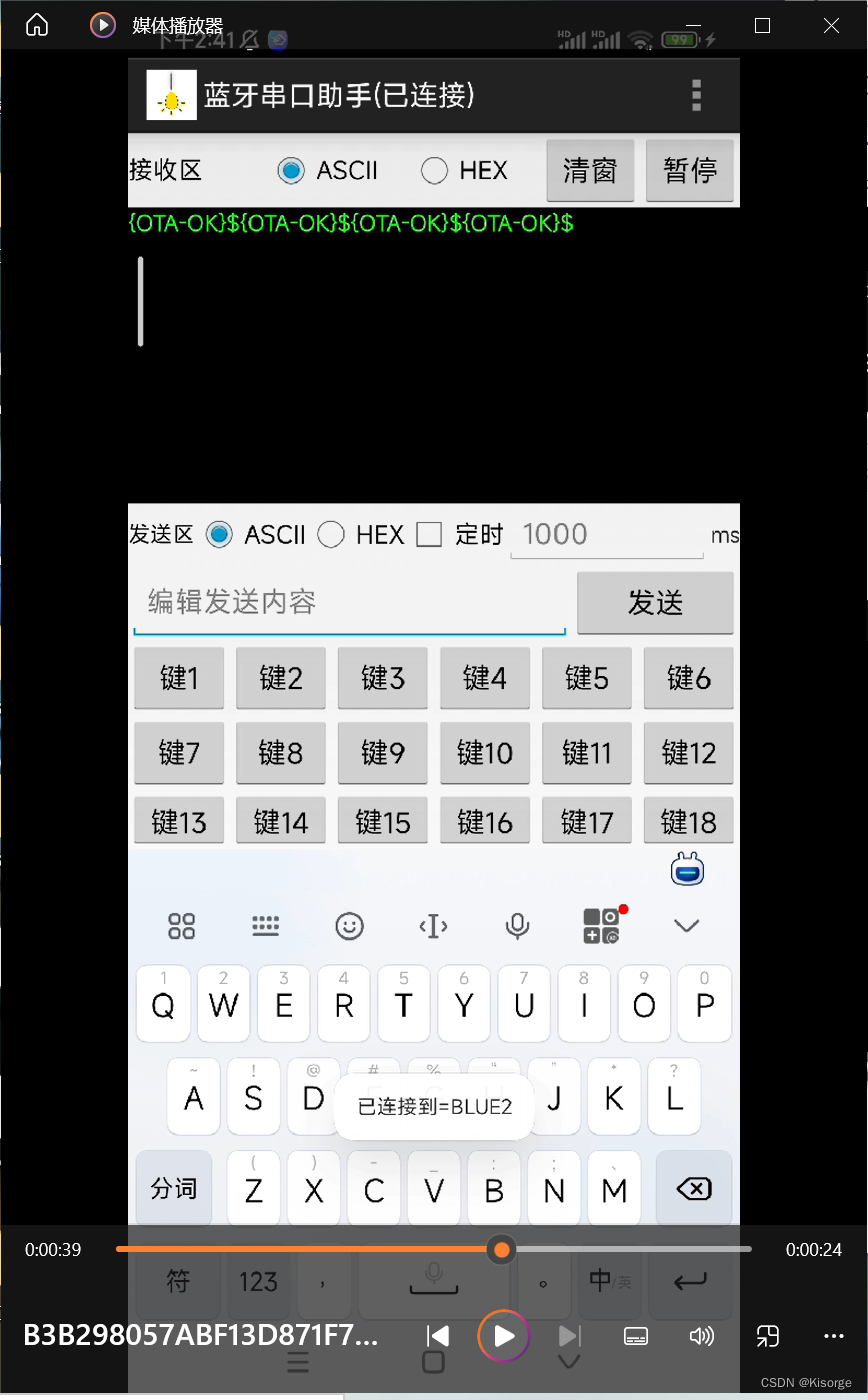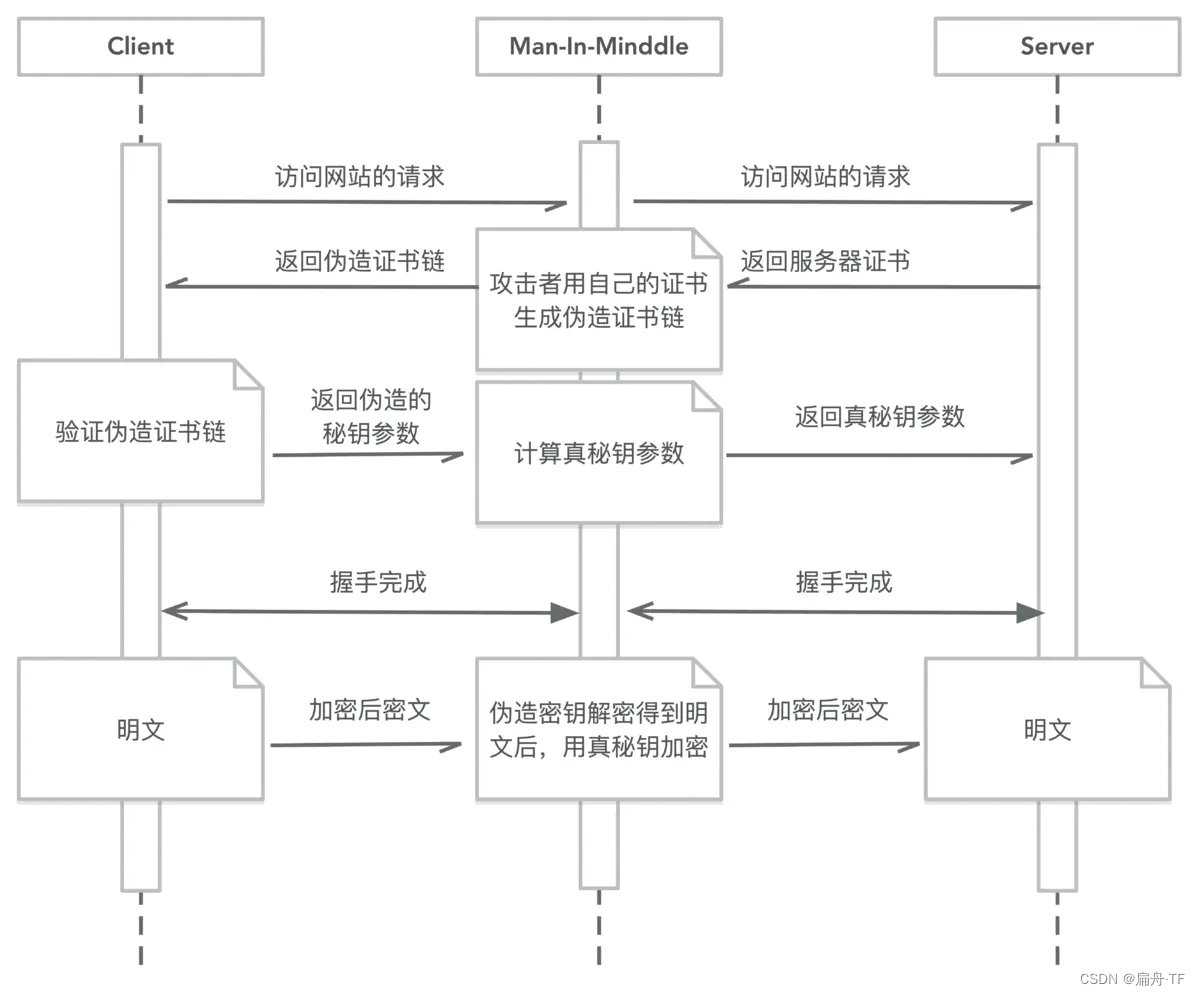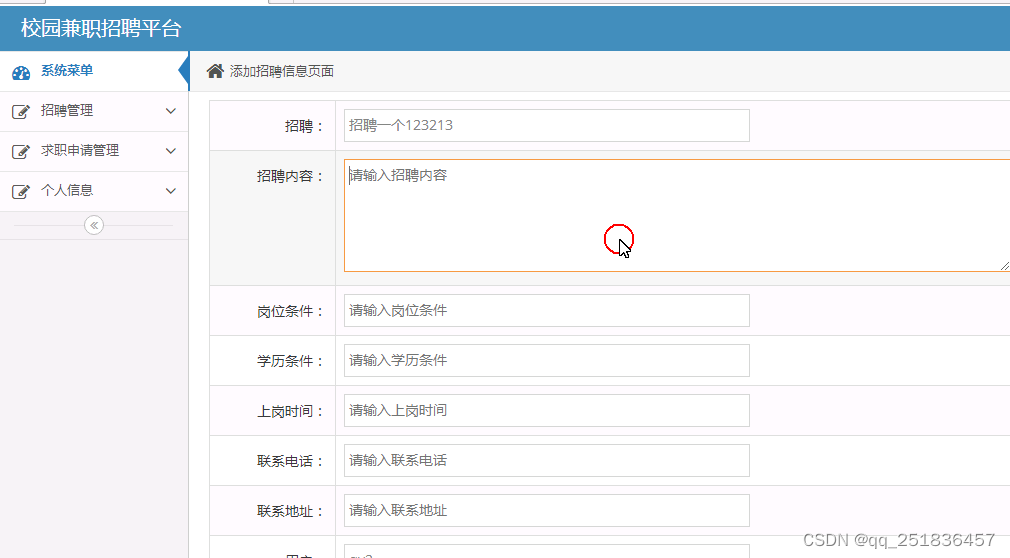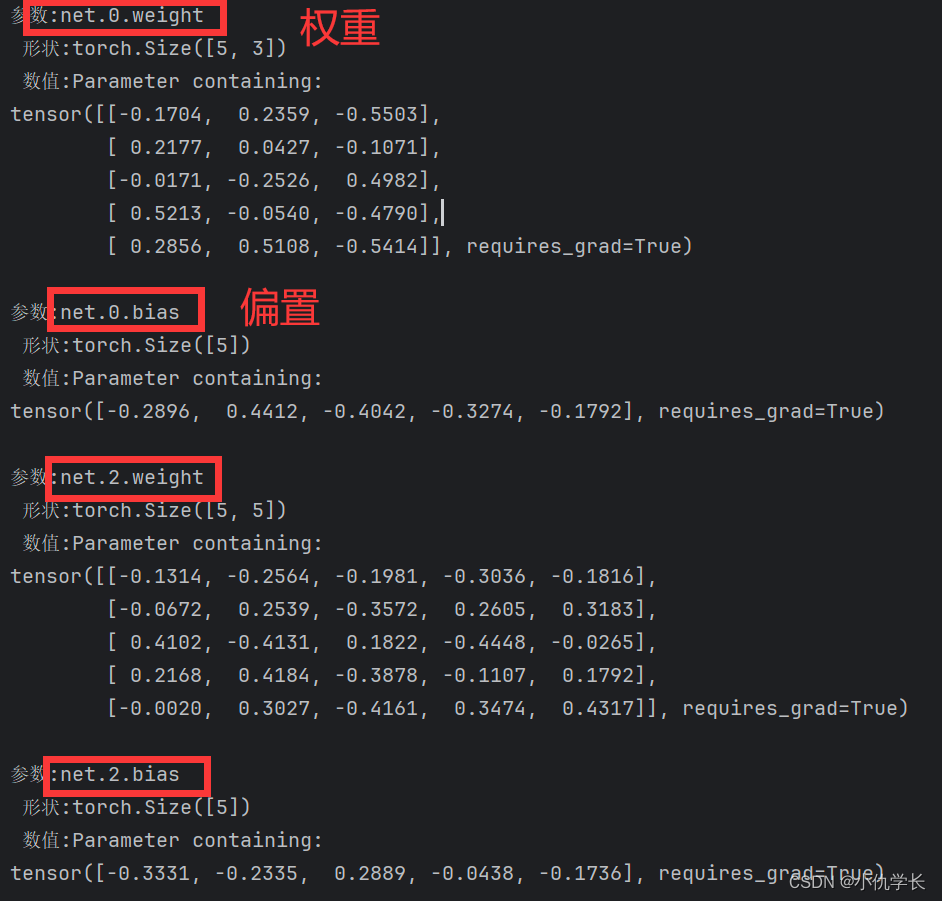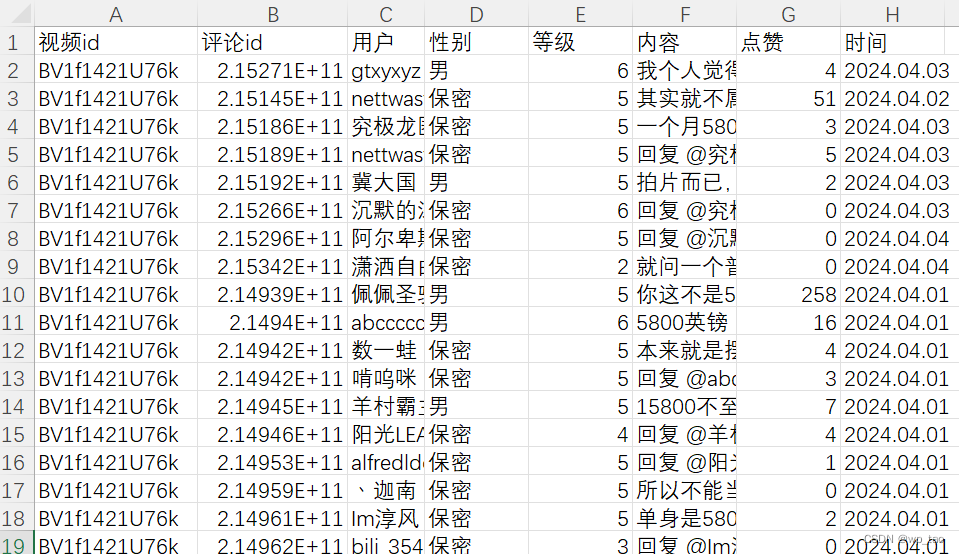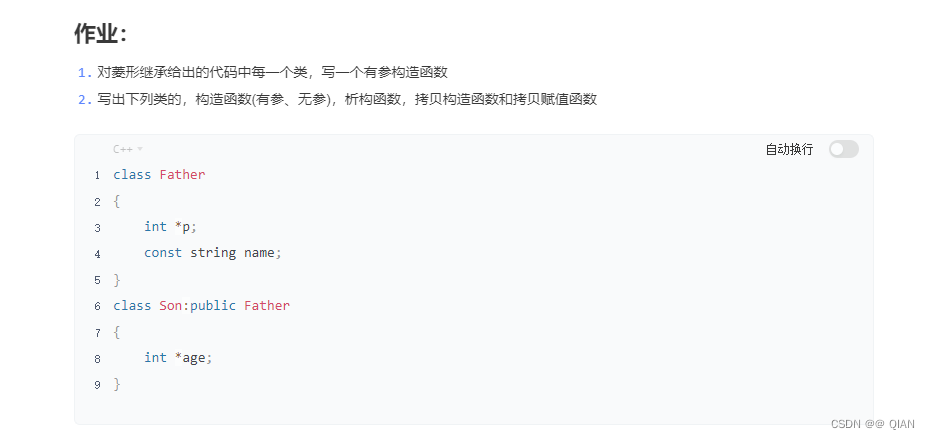
#include <iostream>
using namespace std;
class A
{
public:
int a;
A(int a):a(a){cout<<"A的有参构造"<<endl;}
};
class B:virtual public A
{
public:
int b;
B(int a,int b):A(a),b(b){cout<<"B的有参构造"<<endl;}
};
class C:virtual public A
{
public:
int c;
C(int a,int c):A(a),c(c){cout<<"C的有参构造"<<endl;}
};
//汇集子类
class D:public B,public C
{
public:
int d;
D(int a,int b,int c,int d):A(a),B(a,b),C(a,c),d(d){cout<<"D的有参构造"<<endl;}
void show()
{
cout<<"d="<<d<<endl;
cout<<"c="<<c<<endl;
cout<<"b="<<b<<endl;
cout<<"a="<<a<<endl;
}
};
int main()
{
//实例化汇集子类D的类对象
D d1(10,20,30,40);
d1.show();
d1.a = 90;
d1.show();//对于公共基类继承加上virual后,在汇集子类中只能找到一个属性a
d1.B::A::a = 80;
d1.C::A::a = 80;
d1.show();
return 0;
}

#include <iostream>
using namespace std;
class Father
{
int *p;
const string name;
public:
Father():p(new int),name("张三"){cout<<"Father的无参构造"<<endl;}//Father的无参构造
Father(int value):p(new int(value)),name("张三"){cout<<"Father的有参构造"<<endl;}
Father(const Father &other):p(new int(*(other.p))),name("张三"){cout<<"Father的拷贝构造"<<endl;}
Father &operator=(const Father &other)
{
this->p = other.p;//浅拷贝
*(this->p) = *(other.p);//深拷贝
cout<<"Father的拷贝赋值"<<endl;
return *this;
}
~Father()
{
delete p;
cout<<"Father的析构函数"<<endl;
}
void show()
{
cout<<"p的指向"<<p<<endl;
cout<<"*p="<<*p<<endl;
cout<<"name = "<<name<<endl;
}
};
class Son:public Father
{
int *age;
public:
Son(){};//Son的无参构造;
Son(int age):Father(),age(new int(age)){cout<<"Son的有参构造"<<endl;}
Son(int age,int value):Father(value),age(new int(age)){cout<<"Son的有参构造"<<endl;}
using Father::Father;//使用父类的构造函数
Son(const Son &other):Father(other),age(new int(*(other.age))){cout<<"Son的拷贝构造"<<endl;}
Son &operator=(const Son &other)
{
*(this->age) = *(other.age);
Father::operator=(other);
return *this;
}//Son的拷贝赋值函数
~Son()
{
delete age;
cout<<"Son的析构函数"<<endl;
}
};
int main()
{
Son s1(20,30);
s1.show();
Son s2 = s1;
s2.show();
return 0;
}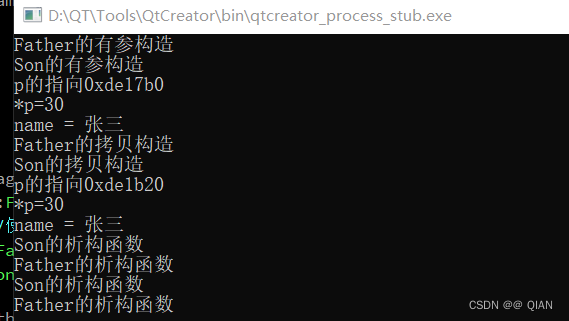
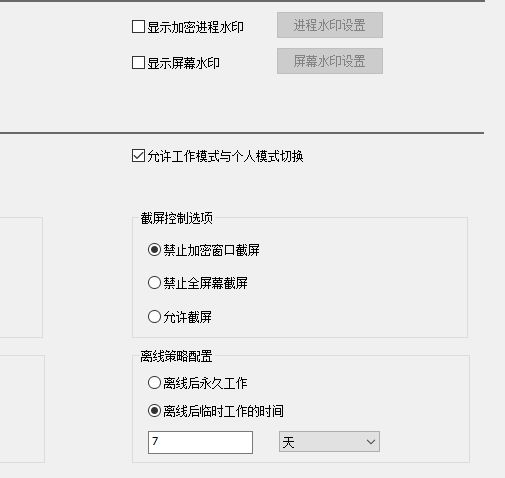
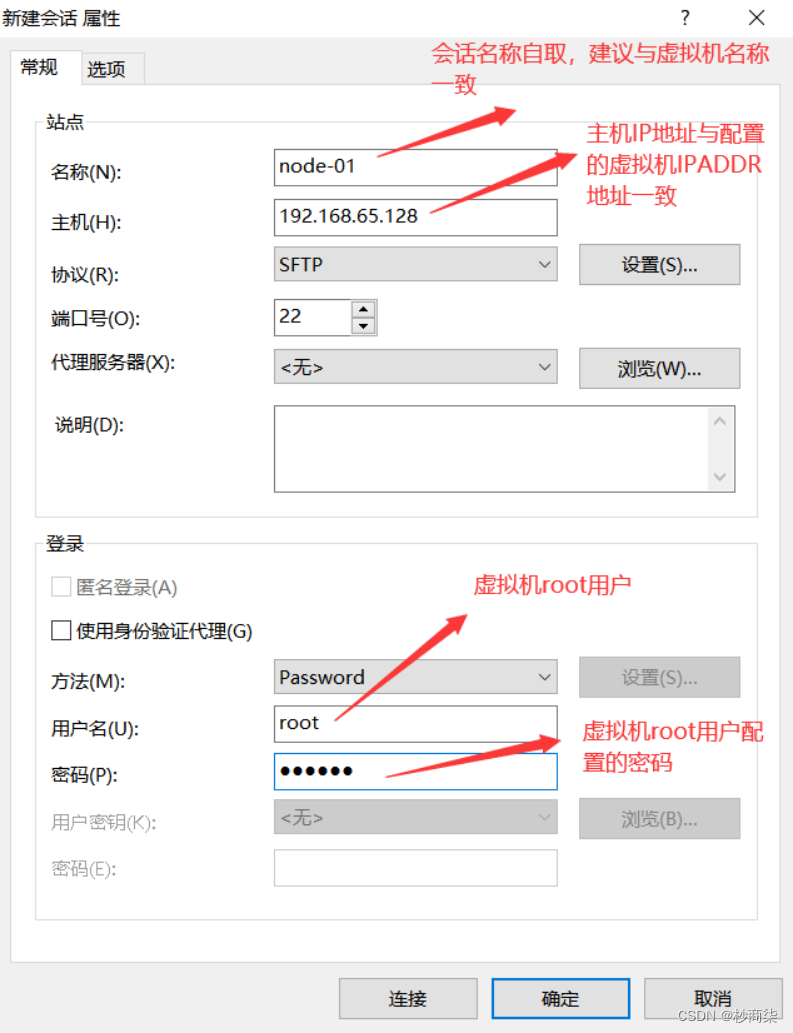
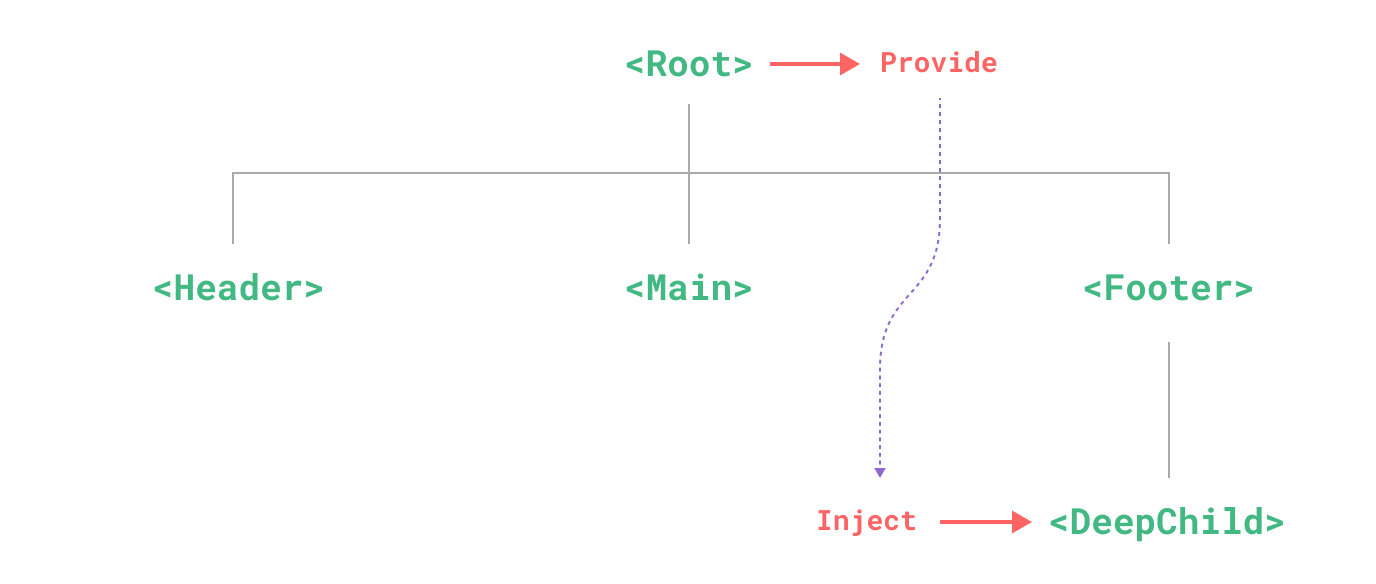

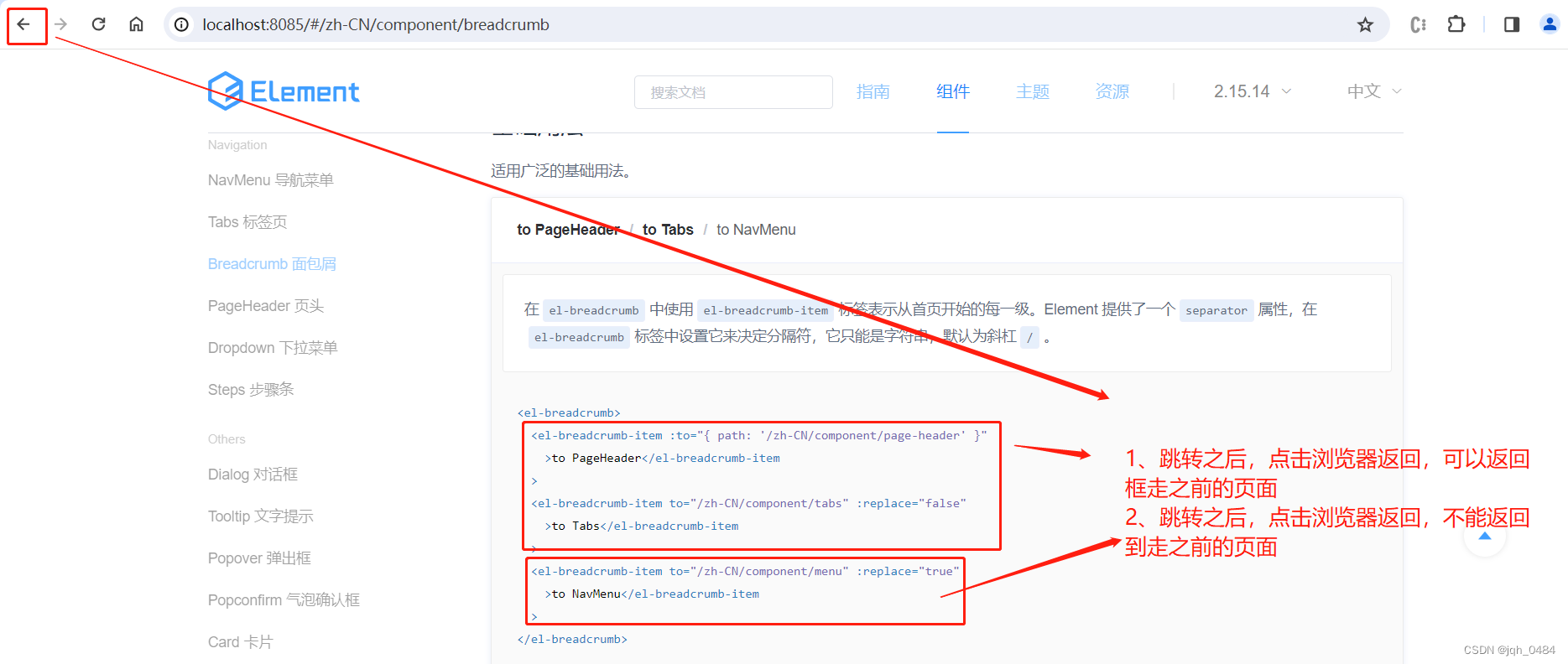
![【洛谷 P8695】[蓝桥杯 2019 国 AC] 轨道炮 题解(映射+模拟+暴力枚举+桶排序)](https://img-blog.csdnimg.cn/direct/80a460261d8045a1be53c602862ec9c3.png)

![[图解]DDD领域驱动设计伪创新-通用语言05](https://img-blog.csdnimg.cn/direct/ac74cce610a04ac098659159a3fa2bff.png)
